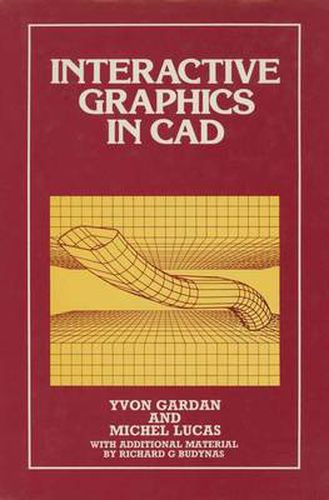Readings Newsletter
Become a Readings Member to make your shopping experience even easier.
Sign in or sign up for free!
You’re not far away from qualifying for FREE standard shipping within Australia
You’ve qualified for FREE standard shipping within Australia
The cart is loading…






This title is printed to order. This book may have been self-published. If so, we cannot guarantee the quality of the content. In the main most books will have gone through the editing process however some may not. We therefore suggest that you be aware of this before ordering this book. If in doubt check either the author or publisher’s details as we are unable to accept any returns unless they are faulty. Please contact us if you have any questions.
In a society in which the use of information technology is becoming commonplace it is natural that pictures and images produced by elec tronic means should be increasing in importance as a means of com munication. Computer graphics have only recently come to the atten tion of the general public, mainly through animated drawings, advertise ments and video games. The quality of the pictures is often such that, unless informed of the fact, people are unaware that they are created with the help of computers. Some simulations, those developed in con nection with the space shuttle for example, represent a great and rapid progress. In industry, computer graphic techniques are used not only for the presentation of business data, but also in design and manufacture processes. Such computer-assisted systems are collectively represented by the acronym CAX. In CAD/CAM (computer-assisted design/manufacture), interactive graphic techniques have attained considerable importance. In CAD/CAM systems a dialogue can be established between the user and the machine using a variety of easy to operate communication devices. Due to the recent developments in hardware and software (for modelling, visual display, etc), a designer is now able to make decisions based on the information presented (plans, perspective drawings, graphics, etc) with the help of interactive, graphic techniques. These constitute the most visible and perhaps most spectacular aspect of CAD/CAM systems.
$9.00 standard shipping within Australia
FREE standard shipping within Australia for orders over $100.00
Express & International shipping calculated at checkout
This title is printed to order. This book may have been self-published. If so, we cannot guarantee the quality of the content. In the main most books will have gone through the editing process however some may not. We therefore suggest that you be aware of this before ordering this book. If in doubt check either the author or publisher’s details as we are unable to accept any returns unless they are faulty. Please contact us if you have any questions.
In a society in which the use of information technology is becoming commonplace it is natural that pictures and images produced by elec tronic means should be increasing in importance as a means of com munication. Computer graphics have only recently come to the atten tion of the general public, mainly through animated drawings, advertise ments and video games. The quality of the pictures is often such that, unless informed of the fact, people are unaware that they are created with the help of computers. Some simulations, those developed in con nection with the space shuttle for example, represent a great and rapid progress. In industry, computer graphic techniques are used not only for the presentation of business data, but also in design and manufacture processes. Such computer-assisted systems are collectively represented by the acronym CAX. In CAD/CAM (computer-assisted design/manufacture), interactive graphic techniques have attained considerable importance. In CAD/CAM systems a dialogue can be established between the user and the machine using a variety of easy to operate communication devices. Due to the recent developments in hardware and software (for modelling, visual display, etc), a designer is now able to make decisions based on the information presented (plans, perspective drawings, graphics, etc) with the help of interactive, graphic techniques. These constitute the most visible and perhaps most spectacular aspect of CAD/CAM systems.